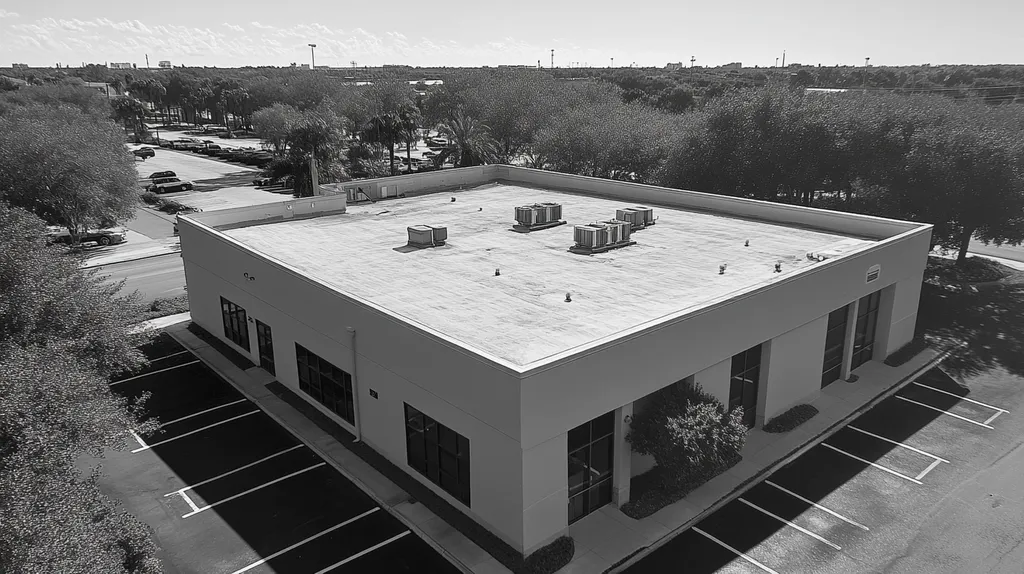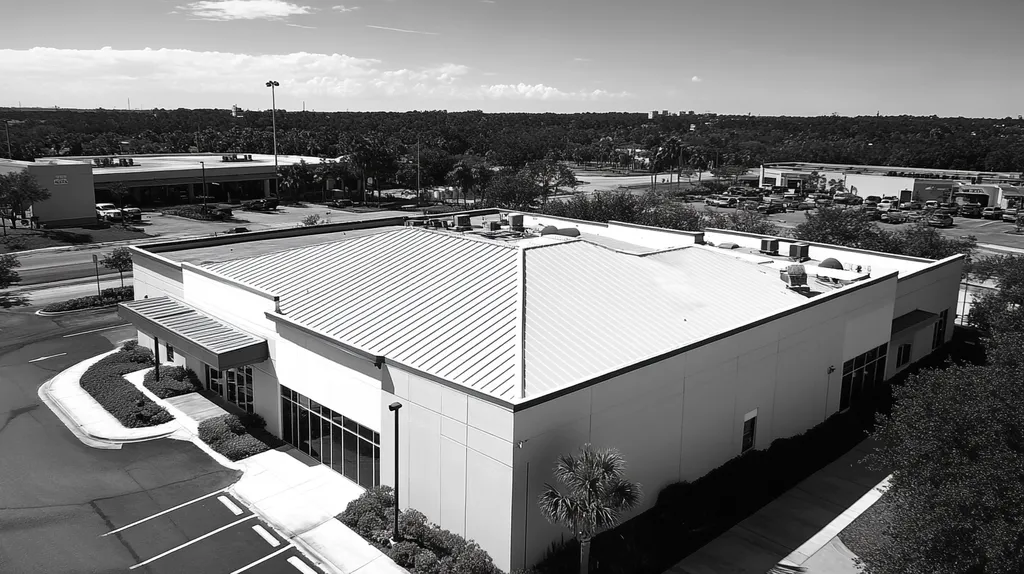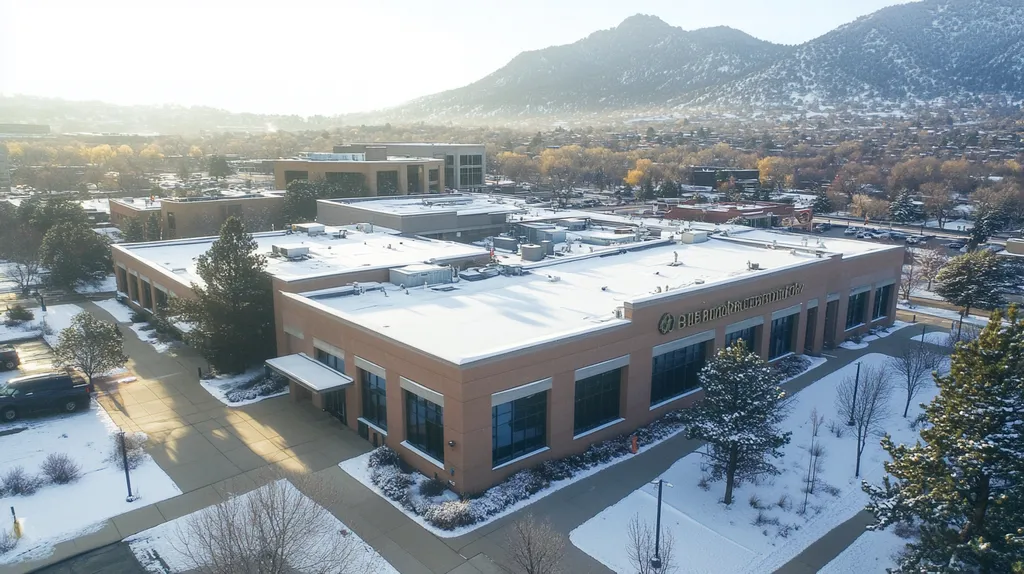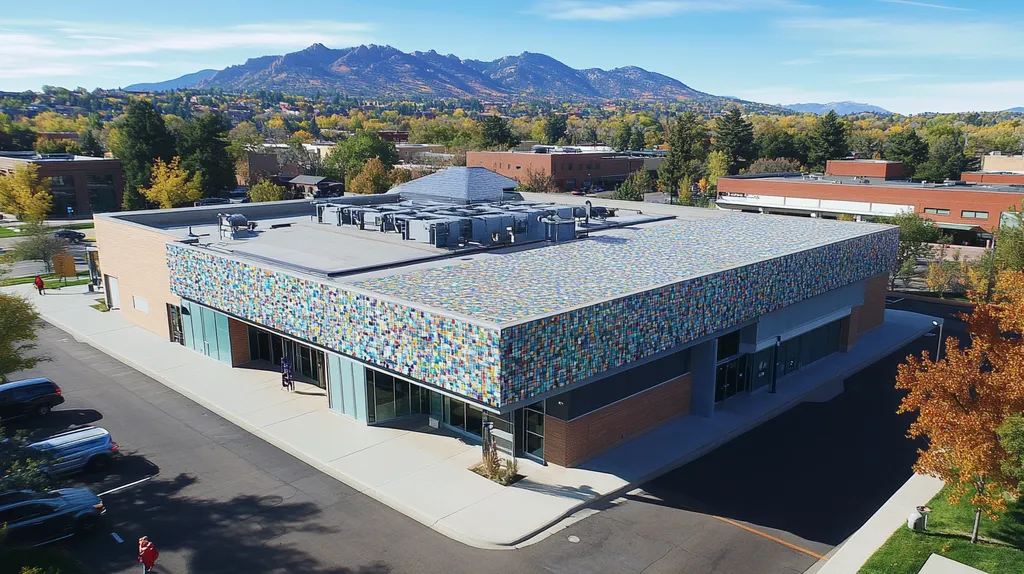Every year, over 40 fatalities occur in the construction industry due to heat-related illnesses, with roofing workers facing the highest risk due to direct sun exposure and elevated working conditions.
For facility managers overseeing roofing projects, preventing heat-related incidents isn’t just about worker safety – it’s a critical business imperative that impacts productivity, compliance, and the bottom line.
This comprehensive guide provides actionable solutions across six key areas: performance factors, financial considerations, compliance requirements, risk management, operational procedures, and long-term planning strategies.
SECTION 1: PERFORMANCE FACTORS
The risk of heat-related illnesses on roofing projects is a serious concern that demands attention. With over 40 fatalities reported annually in the construction industry due to heat stress, facility managers must take proactive steps to protect their workers during scorching weather. This section explores three critical performance factors to prioritize: assessing weather conditions, implementing worker acclimatization protocols, and understanding the heat impact of different roofing materials.
Weather Condition Assessment
Effective weather condition assessments are essential for managing heat-related risks on roofing jobs. Extreme heat can be particularly hazardous during the peak summer months, making it critical for facility managers to gather reliable weather data and monitor humidity levels closely.
In cases of severe weather warnings, it’s best to pause any roof work. Adopting a weather-triggered work schedule can shield employees from dangerous heat exposure, ensuring crews work under safer conditions.
Utilizing real-time weather monitoring tools further enhances safety protocols on-site. These tools deliver immediate updates, allowing managers to respond swiftly to changing conditions. Staying informed prepares teams for shifting temperatures or unexpected heat waves.
Key Action Items
Worker Acclimatization Protocols
Acclimatization is pivotal in reducing the risk of heat-related illnesses among roofing workers. This process allows workers to gradually adapt to high temperatures, minimizing the chances of heat fatigue or even heat stroke.
Facility managers should create dedicated protocols for acclimatizing new employees. For example, the first week on the job should include shorter shifts and more frequent breaks in cooler areas, helping workers ease into the heat.
Moreover, education plays a critical role in acclimatization. Training workers to recognize symptoms of heat stress empowers them to know their limits. Encouraging open conversations about heat safety fosters a culture of vigilance and care on-site.
Key Action Items
Roofing Material Heat Impact
The choice of roofing materials plays a crucial role in heat stress exposure for workers. Dark-colored roofing materials absorb and retain more heat than lighter options, leading to elevated surface temperatures that can contribute to increased risks for roofing crews.
To enhance worker safety, facility managers should explore the use of reflective or lighter-colored roofing materials. Not only can these choices improve energy efficiency, but they also help keep workers more comfortable by mitigating surface heat.
Furthermore, understanding how roofing materials interact with weather conditions is vital. Some materials retain heat longer into the evening, which can affect workers who might be laboring at night. Being informed empowers managers to make safer material selections that prioritize worker welfare.
Key Action Items
SECTION 2: FINANCIAL CONSIDERATIONS
Heat-related illnesses pose not just a risk to worker safety but also a serious financial threat to facilities. With the Occupational Safety and Health Administration (OSHA) reporting that these illnesses can lead to ballooning medical costs and lost labor hours, understanding the financial implications is essential for facility managers. Recognizing this impact helps ensure a focus on safe working conditions that are less likely to strain budgets and operations.
Cost of Heat-Related Illnesses
Heat-related illnesses can put a significant dent in any organization’s budget. Businesses face direct costs from medical bills that can escalate rapidly with the severity of the illness. Additionally, regulatory fines for non-compliance with safety protocols can further burden finances.
The indirect costs can be even more substantial. Lost productivity due to recovery times, along with employee turnover, can drain resources silently. Moreover, finding qualified replacements can take time and money, adding to the financial stress.
Workers suffering from heat stress not only perform poorly but can also derail project timelines. When evaluating expenses, the hidden financial effects of heat-related incidents become alarmingly clear, underscoring the need for strategic investments in prevention.
Key Action Items
Investment in Protective Equipment
Investing in protective equipment like cooling vests and hydration systems is essential to protect workers. While the initial costs may be high, the long-term returns in terms of fewer healthcare claims and improved productivity are substantial.
Providing such equipment not only showcases a commitment to employee safety but also boosts morale and fosters loyalty. In addition, a reputation for prioritizing worker well-being can attract skilled labor and enhance overall productivity.
It’s worth noting that businesses implementing effective safety measures may qualify for tax incentives or rebates. Thus, today’s smart investments can lead to significant cost reductions in the future, making it a savvy financial strategy for facility management.
Key Action Items
Productivity Loss Prevention
Heat-related illnesses can lead to significant drops in productivity, creating ripple effects on projects and deadlines. A single heat incident can sideline workers for days, delaying project timelines and inflating costs.
Facility managers can proactively prevent such losses by implementing robust heat safety measures. This includes creating and enforcing comprehensive heat safety policies, offering thorough training, and promoting regular breaks to keep workers safe and engaged.
Additionally, scheduling labor during cooler hours can greatly reduce the likelihood of heat-related incidents, optimizing workforce efficiency. Taking a proactive approach to heat management not only prioritizes worker safety but also protects the facility’s financial health.
Key Action Items
SECTION 3: COMPLIANCE REQUIREMENTS
Heat-related illnesses on rooftops are not just a minor concern; they represent a significant risk to worker health and safety. With thousands of workers suffering from heat stress each year, understanding and adhering to compliance regulations is crucial for property owners and facility managers. By being proactive in their approach to safety, they can protect their workforce and reduce liability. This section highlights essential compliance requirements, including OSHA regulations, employee training mandates, and best practices for documentation.
OSHA Heat Hazard Regulations
The Occupational Safety and Health Administration (OSHA) lays down specific guidelines designed to minimize heat dangers in outdoor work environments. Employers are legally required to ensure a workplace that safeguards against excessive heat and to actively monitor heat stress levels. Routine heat hazard assessments must be conducted to pinpoint risks associated with different roofing tasks.
OSHA encourages the acclimatization of workers, allowing them to gradually adjust to soaring temperatures. Non-compliance with these regulations can lead to hefty fines and, more importantly, compromises worker health and safety. Mastering these requirements is vital for facility managers aiming to create a secure work environment.
Employers must also guarantee that workers have ample access to hydration and cooling areas during shifts. Regular breaks in shaded or air-conditioned spaces are key to preventing heat-related illnesses. Remember, compliance isn’t solely about avoiding fines; it fundamentally enhances both worker welfare and productivity.
Key Action Items
Training and Education Mandates
Training forms the backbone of compliance with OSHA’s heat safety regulations. Facility managers must ensure that all employees are well-informed about the dangers of heat-related illnesses and how to combat them. This involves educating workers on the signs of heat stress and the paramount importance of staying hydrated.
Best practices dictate that training be held regularly, ideally before peak heat seasons, equipping workers with essential knowledge to identify hazards and respond proactively. These sessions should focus on practical methods, including hydration techniques and recognizing the right moments to take breaks.
Moreover, nurturing an atmosphere of open communication is essential. Workers should feel encouraged to voice concerns regarding heat safety without fearing retaliation. By fostering a culture of safety and compliance, facility managers can significantly lower health risks on rooftops.
Key Action Items
Documentation and Record Keeping
Proper documentation is not just a regulatory requirement; it’s vital for ensuring compliance with OSHA heat regulations. Facility managers should maintain comprehensive records of heat hazard assessments, employee training sessions, and any incidents involving heat stress. These records act as proof of compliance and provide essential insights for enhancing safety practices.
It’s imperative to document training completion, confirming that all employees have received critical safety information regarding heat exposure. This documentation becomes crucial in the event of any investigations or legal scenarios that relate to worker health incidents.
Furthermore, tracking employee health monitoring can proactively address potential heat-related challenges. By analyzing trends over time, managers can implement timely measures that boost workplace safety. Diligent documentation is a proactive step toward creating a safer environment for roof laborers.
Key Action Items
SECTION 4: RISK MANAGEMENT
Heat-related illnesses are a serious threat to rooftop workers, endangering both their health and the productivity of the workplace. Each year, the Occupational Safety and Health Administration (OSHA) reports thousands of incidents linked to heat stress, resulting in lost workdays and higher costs for employers. To combat this pressing issue, implementing effective risk management strategies is essential. This section will delve into identifying high-risk workers, monitoring heat index levels, and developing emergency response plans to keep personnel safe and operations running smoothly.
Identifying High-Risk Workers
Spotting high-risk workers is key to preventing heat-related illnesses on roofs. Certain factors like age, existing medical conditions, and overall physical fitness can increase an individual’s susceptibility to heat stress. For example, older workers or those with heart conditions may require extra supervision during extreme heat events.
Employers should introduce pre-screening processes to evaluate the specific vulnerabilities of their workforce. This proactive measure allows for personalized training and interventions tailored to the needs of high-risk employees, thereby creating safer work environments and boosting morale.
Regular check-ins can help catch early signs of heat stress. Implementing a buddy system encourages colleagues to look out for each other’s well-being, creating a supportive culture. Educating workers about recognizing symptoms is crucial, as it helps in prompt reporting and reduces the risk of severe health consequences.
Key Action Items
Monitoring Heat Index Levels
Keeping an eye on heat index levels is crucial for creating safe working conditions on rooftops. The heat index—calculated by combining temperature and humidity—gives a better insight into heat exposure risk than temperature alone. Facility managers should routinely check local weather reports or use portable monitoring tools to understand real-time conditions.
Integrating heat index data into daily safety briefings keeps workers informed about current risks. When the heat index rises to dangerous levels, adjusting work schedules, such as moving tasks to earlier mornings or later afternoons, can significantly reduce heat exposure risks.
Creating easily accessible displays for workers to monitor current conditions is also beneficial. Implementing a tiered alert system enhances awareness, providing clear guidance on necessary precautions as the heat index increases.
Key Action Items
Emergency Response Planning
An effective emergency response plan is essential for tackling heat-related illnesses when they arise. Establishing clear protocols for recognizing heat stress symptoms and providing immediate assistance is paramount. Designated personnel trained in heat illness response and readily available first-aid supplies on-site can make a critical difference in these situations.
Training employees regularly on emergency procedures ensures everyone knows the steps to take during a heat-related incident. Rehearsing emergency situations enhances readiness and builds confidence among staff, ensuring that they can act effectively when needed.
Additionally, having a reliable communication system facilitates swift action in summoning medical help. Workers should be informed about the best methods to report emergencies and the specific information to provide to responders.
Key Action Items
SECTION 5: OPERATIONAL PROCEDURES
Heat-related illnesses can catch workers off guard on rooftops, threatening their health and safety. The Occupational Safety and Health Administration (OSHA) reports more than 2,000 heat-related illnesses in the workplace every year. To combat this, facility managers must employ effective operational procedures. This section delves into key strategies for work/rest regimens, hydration, nutrition, and cooling provisions to keep workers protected from the heat.
Work/Rest Regimens and Scheduling
Structured work/rest regimens are vital for protecting employees from heat stress on hot roofs. Incorporating frequent breaks in shaded or cool areas helps workers recharge both hydration and energy levels. A widely accepted standard is a 10-minute break per hour when temperatures soar above 85°F.
Task rotation plays a key role in mitigating extended heat exposure. For instance, if one crew focuses on laying roofing material, swapping roles or allowing task changes can help distribute physical strain and prevent fatigue.
Leveraging weather forecasts to shape daily schedules further enhances worker safety. Aligning high-risk activities with cooler times of the day, such as early mornings or late afternoons, helps optimize working conditions.
Key Action Items
Hydration and Nutrition Strategies
Staying hydrated and well-nourished is crucial for fighting heat stress effectively. Facilities should provide easily accessible water stations and encourage workers to drink water every 15-20 minutes, regardless of thirst. Teaching employees about hydration benefits promotes better adherence.
Nutrition also significantly influences heat management. Offering electrolyte-rich beverages and healthy snacks such as fruits or energy bars can help sustain energy levels. Snacks rich in carbohydrates and proteins support workers’ endurance during long shifts in the heat.
Regular training sessions to recognize dehydration symptoms empower workers to protect their health. When everyone is aware of hydration needs, it fosters a supportive atmosphere that prioritizes well-being.
Key Action Items
Shade and Cooling Provision
Creating shaded and cooling environments is crucial for preventing heat illnesses. Temporary shade structures, such as canopies or tents, should be set up to provide break areas that workers can easily access, encouraging them to step away from the sun.
Investing in portable cooling options can greatly enhance comfort. Misting fans and portable air conditioning units offer immediate relief during brutal temperatures, supporting sustained productivity.
Additionally, facility managers should assess and adjust the worksite layout. Positioning heavy machinery or materials in a way that minimizes workers’ heat exposure contributes to a safer environment.
Key Action Items
SECTION 5: OPERATIONAL PROCEDURES
Heat-related illnesses can strike unexpectedly on roofs, posing serious risks to workers’ health and safety. The Occupational Safety and Health Administration (OSHA) reports more than 2,000 heat-related illnesses occur in the workplace each year. Facility managers must implement effective operational procedures to combat these risks. This section discusses essential strategies for work/rest regimens, hydration, nutrition, and cooling provisions to protect workers from heat stress.
Work/Rest Regimens and Scheduling
Implementing structured work/rest regimens is vital for protecting employees on hot roofs. Frequent breaks in shaded or cool areas are essential for restoring hydration and energy. For instance, a widely recognized standard suggests providing a 10-minute break every hour once temperatures exceed 85°F.
Task rotation also helps minimize excessive heat exposure. If one crew is dedicated to laying roofing materials, rotating tasks can prevent fatigue from building up.
Leveraging weather forecasts to shape daily schedules can further enhance safety. Rescheduling high-risk activities to cooler parts of the day, like early mornings or late afternoons, allows for better working conditions.
Key Action Items
Hydration and Nutrition Strategies
Proper hydration and nutrition are crucial for combating heat stress effectively. Facilities should provide easily accessible water stations and encourage workers to hydrate every 15-20 minutes, even if they’re not thirsty. Educating employees about the benefits of hydration fosters better compliance.
Nutritional support also plays a critical role. Providing electrolyte-rich drinks and healthy snacks, such as fruits or energy bars, helps maintain energy levels during shifts. Options rich in carbohydrates and proteins support endurance in the heat.
Regular training on recognizing dehydration symptoms empowers workers to monitor both their health and that of their coworkers, creating a culture that prioritizes well-being.
Key Action Items
Shade and Cooling Provision
Creating shaded areas and cooling mechanisms is essential for preventing heat-related illnesses. Temporary shade structures, like canopies or tents, should be readily available for workers to rest and cool off, encouraging breaks away from direct sunlight.
Investing in portable cooling devices can also make a significant impact. Misting fans and portable air conditioning units provide immediate relief during hot weather, supporting ongoing productivity.
Furthermore, facility managers should assess worksite layout to optimize shade. Positioning heavy machinery or materials strategically can minimize workers’ heat exposure, contributing to a safer work environment.
Key Action Items
The Bottom Line
With heat-related fatalities in construction reaching record highs and OSHA penalties for non-compliance exceeding $13,000 per violation, facility managers can no longer afford to treat heat stress as a secondary concern.
The stakes are clear: implementing comprehensive heat safety measures isn’t just about regulatory compliance – it’s about protecting workers’ lives while safeguarding operational continuity.
From establishing robust work-rest schedules to investing in proper cooling equipment, every preventive measure yields measurable returns in reduced downtime, enhanced productivity, and improved worker retention.
As climate patterns continue to intensify, facilities that prioritize heat safety today will be better positioned to maintain operational excellence while setting new industry standards for workplace safety.
The time to act is now – before the next heat wave puts your workers and operations at risk.
FREQUENTLY ASKED QUESTIONS
Q. How can I assess weather conditions for a commercial roof project?
A. Assessing weather conditions involves gathering accurate forecasts and monitoring humidity levels. Use reliable weather data sources to ensure the safety of your roofing crews, especially during peak summer months when heat can be most hazardous. If severe weather alerts are issued, it’s wise to pause any roof work to protect your workers from dangerous conditions.
Q. What are the financial implications of heat-related illnesses on an industrial roof?
A. Heat-related illnesses can lead to significant medical expenses, productivity losses, and fines for non-compliance with safety regulations. These costs can accumulate quickly, affecting profitability and operational budgets. Investing in preventive measures not only safeguards employee health but also enhances overall efficiency and reduces long-term financial strain.
Q. What OSHA regulations should facility managers follow for commercial roofs?
A. Facility managers must adhere to OSHA’s guidelines on heat exposure, which include conducting regular heat assessments and ensuring workers have access to hydration and cooling areas. Training employees to recognize heat stress symptoms is also essential. Compliance not only prevents accidents but also enhances workforce safety and morale.
Q. How can I identify high-risk workers on an industrial roof?
A. Identifying high-risk workers involves evaluating factors like age, existing health conditions, and overall fitness levels. Implement pre-screening to assess vulnerabilities and provide targeted training and support. Encouraging regular check-ins and creating a buddy system increases safety and fosters a sense of community among team members.
Q. What operational procedures should I implement for heat safety?
A. Operational procedures should include scheduled work/rest regimens, accessible hydration stations, and shaded break areas. For example, provide structured breaks during extreme heat and emphasize proper nutrition. Invest in portable cooling options to maintain worker comfort, thus enhancing productivity while mitigating the risks of heat-related illnesses.
Q. How can I monitor heat index levels effectively?
A. Effective monitoring of heat index levels requires daily checks using portable tools or reliable weather forecasts. Integrate this data into your daily briefings and adjust work schedules based on the heat index. Providing displays for workers to easily track conditions ensures everyone is informed and prepared to take necessary precautions when the heat rises.
Q. What should an emergency response plan for heat-related incidents include?
A. An effective emergency response plan should outline procedures for recognizing heat stress symptoms, providing immediate assistance, and summoning medical help. It’s vital to train personnel in these protocols regularly and ensure all employees know how to report emergencies. Simulating emergency situations can enhance readiness and confidence among staff.










